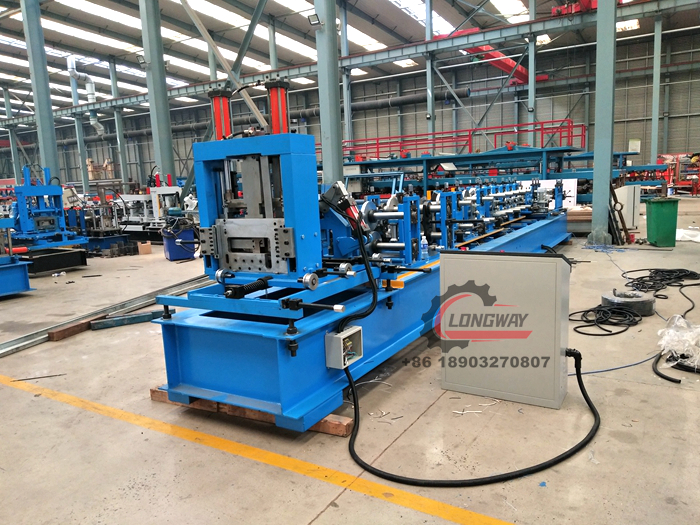ROLL FORMING AS A BENDING PROCESS IN A METAL FABRICATION ENVIRONMENT-roll forming machine
Last week, we detailed the advantages of press braking, comparing it to roll forming as a metal fabrication bending process. Although they have little in common, other than the process category, both are important and have many uses. More than anything, choosing one over the other depends mainly on the end product undergoing fabrication. This week, we’ll take a look at closer look at roll forming specifically.
What is roll forming?
Roll forming is a shaping process, and it can be fascinating to watch, as it is completed as a single, continuous bending operation. Roll forming takes coiled sheet metal and passes it through a series of horizontal, rotating dies to produce a cross-section that is uniform in shape and size.
What are the advantages of roll forming?
The most impressive aspect of roll forming is just how well it handles the shaping and bending of even very long products. This is probably its biggest advantage over press braking, as press brakes can only bend items that are the length of the brake’s bed — at most, 12 feet in length. So while the majority of products can be most cost-effectively and efficiently bent via press brake, there are times when it makes more sense to roll form them instead.
Roll forming also produces an attractive finish without adding an additional finishing step, and secondary processes such as punching can be incorporated directly into the roll forming run instead of being added on as a secondary process.

What are the disadvantages of roll forming?
In general, roll forming is most common and best for use in low-mix, high-volume environments where these types of production runs — especially of very large items — are the norm. Roll forming is rarely, if ever, cost-effective for prototyping or short runs of products.
And although roll forming allows fabricators to add tooling to create just about any shape, even those that are extremely complex, tooling to create those shapes can be exorbitantly expensive. In fact, roll forming tooling can only be used for a single product, and not reused in other ways (similar to metal stamping with dedicated tooling), which can add to the overall production cost of some products.
Another disadvantage is that it can only form on two sides. This is where secondary processes often become necessary with roll-formed pieces as any forming on the ends must be completed after the rolled part has been cut from the roll.
Finally, roll forming sometimes results in end flare due to linear stresses if part geometry is not carefully considered, an issue that is not a concern with other types of forming operations, like press braking.
Roll forming: A specialty metal fabrication process with narrow, but important applications
Although roll forming is not the workhorse that press braking is in metal fabrication environments, it is still a necessary operation with many important uses, especially when items are very long, or a fabricator specializes in a product mix with low variety and high volume.
-
Top Drywall Profile Machine Models for Sale소식Jun.05, 2025
-
The Role of Purlin Machine in Modern Structural Building소식Jun.05, 2025
-
The Advantages of Investing in a Metal Roof Sheet Making Machine소식Jun.05, 2025
-
Key Features of Hydraulic Bending Machine소식Jun.05, 2025
-
Innovations in Standing Seam Metal Roof Machine Technology소식Jun.05, 2025
-
High - Performance Roof Panel Machine for Sale소식Jun.05, 2025
-
Key Features to Look for in a Roof and Wall Panel Machine소식May.23, 2025








